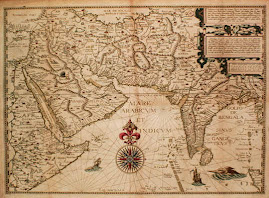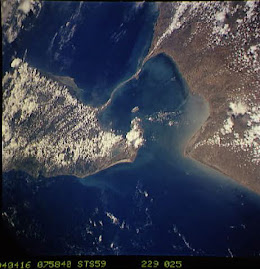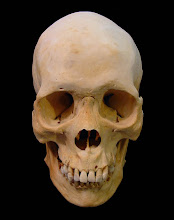
India never invaded any country in her last 100000 years of history.
India invented the Number System.
Aryabhatta invented zero.
The World's first university established in Takshila in 700BC.More than 10,500 students from all over the world studied more than 60 subjects. The University of Nalanda built in the 4th century BC
was one of the greatest achievements of ancient India in the field of education.
Sanskrit is the mother of all the European languages. Sanskrit is the most suitable language for computer software reported in Forbes magazine, July 1987.
Ayurveda is the earliest school of medicine known to humans. charaka, the father of medicine consolidated Ayurveda 2500 years ago. Today Ayurveda is fast regaining its rightful place
in our civilization.
Athough modern images of India often show poverty and lack of development, India was the richest country on earth until the time of
British invasion in the early 17th Century.
The art of Navigation was born in the rIver Sindh 6000 years ago.
The very word Navigation is derived from the Sanskrit word NAVGATIH. The Word navy is also derived from Sanskrit 'Nou'.
Bhaskaracharya calculated the time taken by the earth to orbit the sun hundreds of years before the astronomer Smart.; Time taken by earth to orbit the sun: (5th century) 365.258756484 days.
Budhayana first calculated the value of pi, and he explained the concept of what is known as the Pythagorean Theorem. He discovered this in the 6th century long before the European mathematicians.
Algebra, trigonometry and calculus came from India; Quadratic equations were by Sridharacharya in the 11th century ;
The largest numbers the Greeks and the Romans used were 10 6(10 to the power of 6) whereas Hindus Used numbers as big as 1053 (10 to the
power of 53) with specific names as Early as 5000 BCE
During the Vedic period. Even today, the largest used number is Tera 1012(10 to the power of 12).
According to the Gemological Institute of America, up until 1896,India was the only source for diamonds to the world.
USA based IEEE has proved what has been a century-old suspicion in the world scientific community that the pioneer of Wireless
communication was Prof. Jagdeesh Bose and not Marconi.
The earliest reservoir and dam for irrigation was built in saurashtra. According to Saka King rudradaman I of 150 CE a beautiful lake called 'Sudarshana' was constructed on the hills of Raivataka during Chandragupta Maurya's time.
Chess ((slang not allowed)ranja or AshtaPada) was invented in India.
Sushruta is the father of surgery. 2600 years ago he and health scientists of his time conducted complicated surgeries like cesareans, cataract, artificial limbs, fractures, urinary stones and even plastic surgery and brain surgery. Usage of anesthesia was well known in ancient India.
Over 125 surgical equipment were used. Deep knowledge of anatomy, etiology, embryology, digestion, metabolism, genetics and immunity is also found in many texts.
When many cultures were only nomadic forest dwellers(inc USA) over 5000 years ago, Indians established Harappan culture in Sindhu
Valley (Indus Valley Civilization) THe place value system, the decimal system was developed in India in 100 BC.
QUOTES ABOUT INDIA
India invented the Number System.
Aryabhatta invented zero.
The World's first university established in Takshila in 700BC.More than 10,500 students from all over the world studied more than 60 subjects. The University of Nalanda built in the 4th century BC
was one of the greatest achievements of ancient India in the field of education.
Sanskrit is the mother of all the European languages. Sanskrit is the most suitable language for computer software reported in Forbes magazine, July 1987.
Ayurveda is the earliest school of medicine known to humans. charaka, the father of medicine consolidated Ayurveda 2500 years ago. Today Ayurveda is fast regaining its rightful place
in our civilization.
Athough modern images of India often show poverty and lack of development, India was the richest country on earth until the time of
British invasion in the early 17th Century.
The art of Navigation was born in the rIver Sindh 6000 years ago.
The very word Navigation is derived from the Sanskrit word NAVGATIH. The Word navy is also derived from Sanskrit 'Nou'.
Bhaskaracharya calculated the time taken by the earth to orbit the sun hundreds of years before the astronomer Smart.; Time taken by earth to orbit the sun: (5th century) 365.258756484 days.
Budhayana first calculated the value of pi, and he explained the concept of what is known as the Pythagorean Theorem. He discovered this in the 6th century long before the European mathematicians.
Algebra, trigonometry and calculus came from India; Quadratic equations were by Sridharacharya in the 11th century ;
The largest numbers the Greeks and the Romans used were 10 6(10 to the power of 6) whereas Hindus Used numbers as big as 1053 (10 to the
power of 53) with specific names as Early as 5000 BCE
During the Vedic period. Even today, the largest used number is Tera 1012(10 to the power of 12).
According to the Gemological Institute of America, up until 1896,India was the only source for diamonds to the world.
USA based IEEE has proved what has been a century-old suspicion in the world scientific community that the pioneer of Wireless
communication was Prof. Jagdeesh Bose and not Marconi.
The earliest reservoir and dam for irrigation was built in saurashtra. According to Saka King rudradaman I of 150 CE a beautiful lake called 'Sudarshana' was constructed on the hills of Raivataka during Chandragupta Maurya's time.
Chess ((slang not allowed)ranja or AshtaPada) was invented in India.
Sushruta is the father of surgery. 2600 years ago he and health scientists of his time conducted complicated surgeries like cesareans, cataract, artificial limbs, fractures, urinary stones and even plastic surgery and brain surgery. Usage of anesthesia was well known in ancient India.
Over 125 surgical equipment were used. Deep knowledge of anatomy, etiology, embryology, digestion, metabolism, genetics and immunity is also found in many texts.
When many cultures were only nomadic forest dwellers(inc USA) over 5000 years ago, Indians established Harappan culture in Sindhu
Valley (Indus Valley Civilization) THe place value system, the decimal system was developed in India in 100 BC.
QUOTES ABOUT INDIA
:
Albert Einstein said: We owe a lot to the Indians, who taught us how to count, without which no worthwhile scientific discovery could
have been made.
Mark Twain said: India is the cradle of the human race, the birthplace of human speech, the mother of history, the grandmother of legend, and the great Grand mother of tradition. Our most valuable and most DEstructive materials in the history of man are treasured up in India only.
French scholar Romain Rolland said: If there is one place on the face of earth where all the dreams of living men have found a home from the very earliest days when man began the dream
of existence, it is India.
Hu Shih, former Ambassador of China to USA said: India conquered And dominated China culturally for 20 centuries without ever having to send a single soldier across her border.
Albert Einstein said: We owe a lot to the Indians, who taught us how to count, without which no worthwhile scientific discovery could
have been made.
Mark Twain said: India is the cradle of the human race, the birthplace of human speech, the mother of history, the grandmother of legend, and the great Grand mother of tradition. Our most valuable and most DEstructive materials in the history of man are treasured up in India only.
French scholar Romain Rolland said: If there is one place on the face of earth where all the dreams of living men have found a home from the very earliest days when man began the dream
of existence, it is India.
Hu Shih, former Ambassador of China to USA said: India conquered And dominated China culturally for 20 centuries without ever having to send a single soldier across her border.







